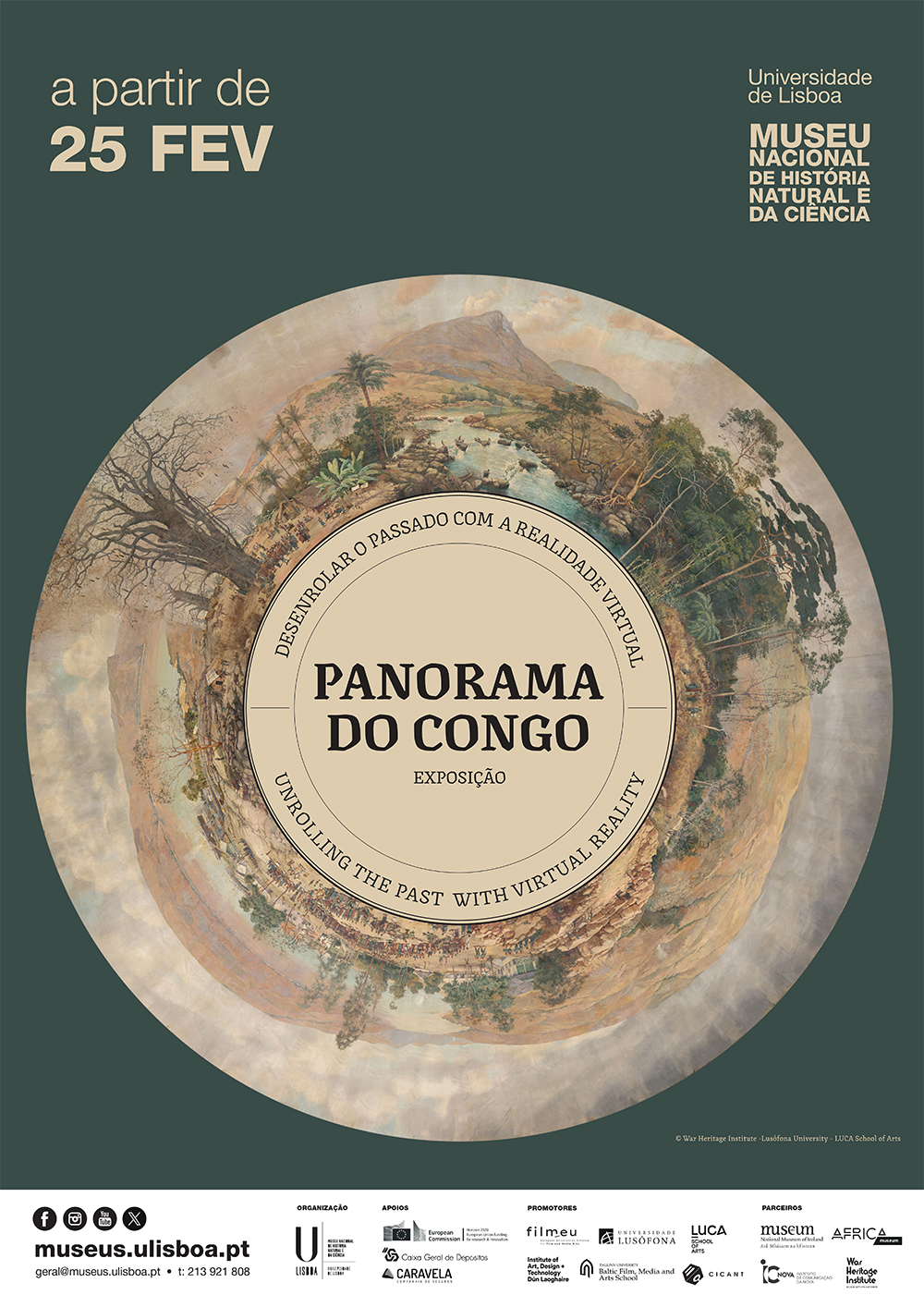
The Panorama of Congo Unrolling the Past through Virtual Reality
In 1911, the Belgian Ministry of Colonies commissioned the painters Paul Mathieu (1872-1932) and Alfred Bastien (1873-1955) to create a Panorama with 115 meters long by 14 meters high. Its goal was to show the territories of the Belgian Congo to the visitors of the International Exposition in Ghent, in 1913. This commission came only five years after the transition into the ownership of the Belgian government of the privately owned territories of King Leopold II, known as the Congo Free State (1877-1908), By this time, the Congo Free State had been exposed internationally for atrocities against the Congolese people, such as forced labour, mutilations, executions, and massive displacements. Reports, such as those by Irish-born British diplomat Roger Casement, contributed to the alert. Congo would become independent only in 1960.
The Panorama of Congo is a huge circular painting, designed to be viewed from a central platform and thus creating an immersive experience. It depicts the landscapes of an ‘African Eden’, highlighting the Belgian investment in modern infrastructure, including railways. The size of the Congo Panorama is proportional to the scandal caused by the various reports of violence against the Congolese a few years earlier, which the Belgian State wanted to erase. For all its controversy, the Congo Panorama was forgotten in museum reserves for almost a century. Deeply associated with colonial propaganda, it can now be considered sensitive heritage.
This exhibition is the result of a research project (CONGO-VR — FilmEU RIT), which aims to photograph and recreate the Panorama through Virtual Reality, bringing it into the debates of decolonization and decolonial thought. Well aware that decolonization is a long-term process, the exhibition presents various stages of the project: the photography of this enormous painting; historical and artistic research on the production of the image and its device; and a Virtual Reality reenactment of the Congo Panorama that will serve as a stage for debates and interventions by artists from the Congolese diaspora, such as Kongo Astronauts (Eléonore Hellio & Michel Ekeba), Deogracias Kihalu, Lukah Katangila, Hadassa Ngamba, Castélie Yalombo.
MUHNAC-ULISBOA is pleased to present this exhibition, which is part of its program of reflection and problematization of issues related to colonial heritage, memory and identity.
Congo VR is the acronym of the research project 'Decolonising the Panorama of Congo: A Virtual Heritage Artistic Research', FILMEU_RIT - Research | Innovation | Transformation project, European Union GRANT_NUMBER: H2020-IBA-SwafS-Support-2-2020.
Curators:
- Leen Engelen
- Victor Flores
- Linda King
- Ana David Mendes








